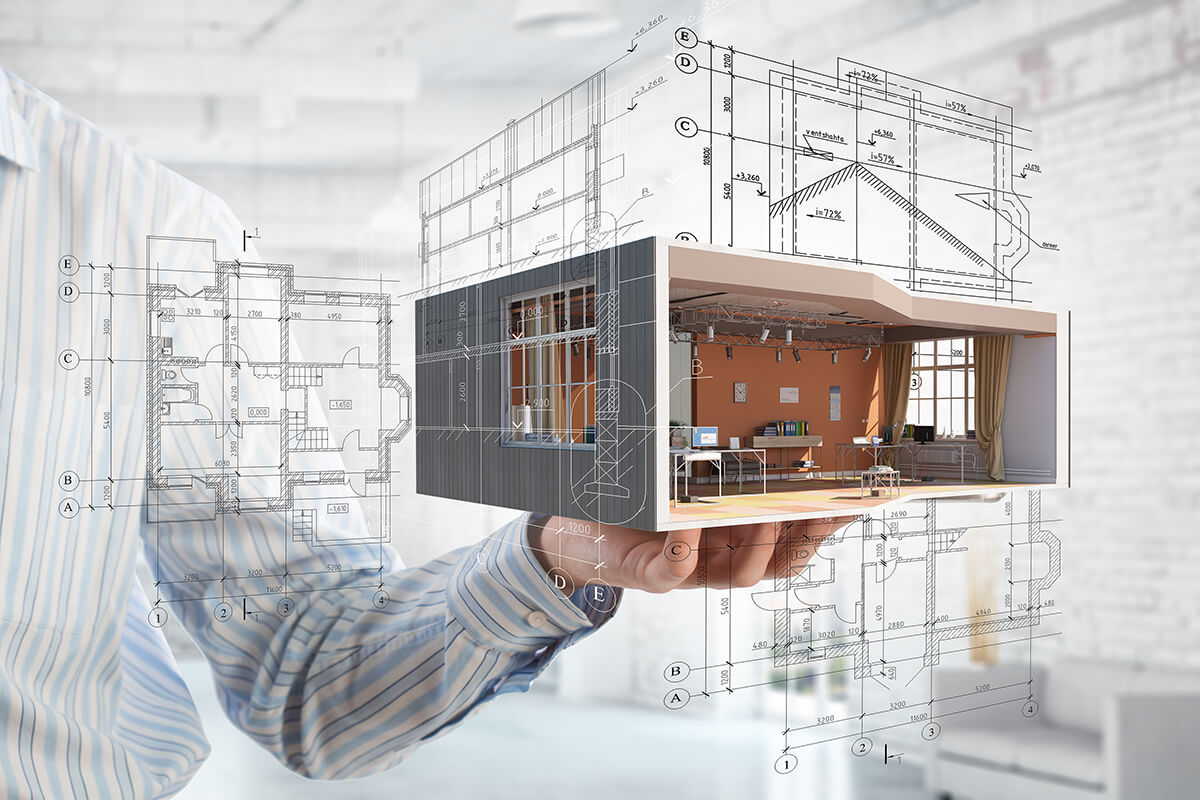Architect Portfolio Tips for Standing Out in the Industry
Architect Portfolio Tips for Standing Out in the Industry
Blog Article
Understanding the Diverse Occupation Paths Available for Aspiring Architect
As an ambitious Architect, you have a world of occupation paths waiting for you. Whether you're drawn to typical style or the subtleties of sustainable style, there's a niche that lines up with your rate of interests.
Typical Architecture: Designing Structures and buildings
Conventional style concentrates on designing structures and structures that blend performance with visual appeal. As you discover this field, you'll value the elaborate balance between form and function. You'll discover to draw motivation from historical designs, including elements like symmetry, materials, and workmanship. Your styles can show social heritage, showcasing neighborhood practices while satisfying modern-day demands.
You'll create skills in drafting, model-making, and site evaluation, enabling you to imagine and communicate your concepts efficiently. Engaging with customers, you'll need to recognize their vision and convert it into viable layouts.
Furthermore, building codes and sustainability techniques are vital in your work, guaranteeing your structures are environmentally friendly and safe. As you grow in your career, you'll find chances in residential, industrial, or perhaps repair projects, each offering distinct difficulties. Embracing traditional design leads the way for a fulfilling occupation that pays homage to the past while forming the future.
Urban Planning: Forming Areas and Public Spaces
As a hopeful Architect, you can play a necessary duty as a metropolitan planner, changing exactly how areas connect and work. By using neighborhood involvement strategies, you'll assure that citizens have a voice in forming their atmosphere. And also, integrating sustainable style concepts will assist create spaces that not only satisfy today's needs yet also shield the future.
Function of Urban Planners
While many might assume of designers as the single visionaries behind structures, urban organizers play a vital role in shaping the more comprehensive landscape of neighborhoods and public rooms. By teaming up with different stakeholders, you'll help develop parks, transportation systems, and property locations that promote social interaction and ease of access. Your competence in spatial design and community characteristics permits you to imagine future growth while protecting cultural heritage.
Community Interaction Techniques
Reliable area interaction approaches are important for urban planners to guarantee that the voices of citizens are listened to and valued in the preparation process. To promote purposeful discussion, you must prioritize open online forums and workshops where area members can express their concepts and problems. By proactively integrating and paying attention feedback, you'll develop spaces that show the neighborhood's requirements, eventually leading to even more lasting and effective urban environments.
Lasting Layout Principles
When creating urban rooms, incorporating lasting style principles is critical for developing environments that flourish both environmentally and socially. Take into consideration integrating eco-friendly areas, like gardens and parks, to boost biodiversity and boost air top quality.
Creating with water conservation in mind is likewise essential-- consider rain gardens and absorptive surface areas to handle stormwater. Involving neighborhood participants during the preparation process guarantees that the rooms you develop satisfy their requirements and urge social interaction. By embracing these concepts, you'll add to dynamic, lasting urban landscapes that benefit every person.

Landscape Architecture: Developing Sustainable Outdoor Environments
As you discover landscape architecture, you'll discover essential style principles that develop attractive and functional outside rooms. Sustainable methods play a crucial duty in guaranteeing these settings flourish while lessening environmental impact. Plus, you'll find a selection of career chances that permit you to make a genuine difference in just how individuals interact with nature.
Style Principles in Landscape
Comprehending design principles in landscape style is essential for developing lasting outside environments that balance with nature. You'll need to consider components like percentage, equilibrium, and range to assure your designs really feel natural and welcoming. Furthermore, pay attention to seasonal adjustments, making with products that complement the surroundings year-round.
Lasting Practices Review
Lasting techniques in landscape style not just concentrate on aesthetics however additionally focus on environmental health and wellness and source conservation. By incorporating native plants, you boost biodiversity and reduce the demand for chemical plant foods and pesticides. Implementing efficient watering systems assists conserve water and decreases runoff, shielding neighboring ecosystems. You can develop areas that promote dirt wellness, such as using natural products and practicing permaculture principles. Furthermore, incorporating green infrastructure, like rain gardens and porous pavements, aids in stormwater monitoring and decreases metropolitan warm. When you develop outdoor settings with sustainability in mind, you contribute to a healthier earth and give rooms that foster community link. Ultimately, these methods assure your layouts profit both people and the environment for many years to come.
Occupation Opportunities Expedition
With a strong foundation in lasting methods, landscape architecture offers a range of job courses that enable you to make a significant influence on the environment. You might work as a landscape developer, producing visually pleasing and functional exterior areas, or specialize in eco-friendly remediation, helping to revive damaged ecological communities. Urban coordinators typically work together with landscape designers to develop green areas in urban setups, enhancing city livability. If you're passionate concerning education and learning, consider becoming a landscape design educator, inspiring future generations. In addition, you may collaborate with nonprofits concentrated on ecological sustainability or take part in research study to introduce new practices. Each course not only shapes attractive environments yet additionally cultivates a healthier earth for future generations.
Lasting Layout: Concentrating On Eco-Friendly Practices
As you explore your profession in design, accepting environment-friendly methods can establish you apart in a competitive field. Lasting design concentrates on developing structures that reduce environmental impact while improving passenger health. By including eco-friendly materials, energy-efficient systems, and sustainable structure methods, you'll add to a greener future.
Beginning by gaining knowledge of environment-friendly qualifications like LEED or BREEAM, which can reinforce your credentials. Think about just how all-natural light, ventilation, and thermal efficiency can optimize design. Team up with engineers and environmental specialists to introduce solutions that decrease waste and save resources.
Don't fail to remember the significance of area participation-- interesting neighborhood stakeholders can inspire layouts that balance with the setting. As clients significantly prioritize sustainability, your competence in environmentally friendly methods will certainly not just bring in jobs yet additionally accomplish your enthusiasm for accountable style. Accept this critical element of the career, and enjoy your career grow.
Historic Preservation: Safeguarding and Recovering Cultural Heritage
While you begin on your building trip, consider the necessary role of historical conservation in preserving our social heritage. This field concentrates on the defense and repair of considerable structures, websites, and structures that inform the tales of our past. By engaging in historic conservation, you'll help guard the building legacy that forms neighborhood identity.
As a historic preservation Architect, you'll analyze historic relevance and evaluate the problem of structures. You'll work closely with guardians and chroniclers to ensure genuine reconstruction strategies are used. This job path allows you to blend imagination with research study, allowing you to create solutions that respect original products and workmanship.
Your work not just adds to sustainability by reusing existing structures however likewise fosters a sense of this page satisfaction within neighborhoods. Accepting this path will certainly aid you come to be a guardian of background, preserving the tales and aesthetics that enrich our lives.
Interior Style: Enhancing Indoor Spaces
Historical preservation and interior architecture both share a commitment to boosting the developed environment, but they focus on different aspects. While historic conservation emphasizes preserving a structure's historical and social value, interior design absolutely nos in on enhancing indoor spaces for functionality and appearances.
As a hopeful Architect, you'll discover that indoor style allows you to blend creativity with technological abilities. You'll create rooms that not only look excellent yet also advertise comfort and efficiency. This field involves understanding how light, color, and materials interact within a space, impacting mood and usability.
You'll work with various projects, from household homes to industrial offices, guaranteeing that each atmosphere fulfills the needs of its passengers. By prioritizing customer experience, you can change interiors right into inspiring and useful spaces, making a significant impact on how individuals connect with their environments. Embrace the chance to improve indoor atmospheres and form the method individuals work and live.
Industrial Layout: Merging Functionality With Appearances
Industrial design plays a vital role in creating items that perfectly mix visual appeals with capability, making sure that what you utilize day-to-day is not just visually appealing however additionally useful. As an ambitious Architect, you could immerse on your own in this area, concentrating on making everything from furnishings to customer electronic devices. Your job entails comprehending individual needs, products, and making processes, permitting you to produce cutting-edge remedies that enhance day-to-day experiences.
In commercial layout, you'll frequently work together with makers, marketers, and designers, making sure that your styles are not only stunning yet additionally feasible. This career path uses a dynamic setting where creativity meets usefulness, making it a fulfilling option for architects interested in shaping the items of tomorrow.
Frequently Asked Questions
What Educational Qualifications Do I Required to End Up Being a Designer?
To end up being an architect, you'll require a professional level in design, generally a Bachelor's or Master's. In addition, you'll need to finish an internship and pass the Architect Registration Assessment to practice lawfully.
Exist Certification Needs for Various Architectural Occupation Paths?
Yes, there're accreditation needs for numerous architectural courses. Architect. You'll require to pass tests, full internships, and occasionally pursue specialized training, relying on your chosen focus, like landscape architecture, metropolitan design, or historical conservation
What Software Abilities Are Vital for Engineers Today?

Just How Can I Gain Practical Experience While Researching Design?
You can obtain functional experience by interning at architectural companies, taking part in layout competitions, offering for community projects, or teaming up with schoolmates on real-world projects. These chances boost your skills and build beneficial links in the market.
What Job Opportunities Exist Outside Typical Architecture Firms?
You can discover numerous job possibilities outside typical architecture companies, like metropolitan preparation, interior style, landscape architecture, building and construction monitoring, property growth, or also roles in sustainability consulting. Each offers one-of-a-kind difficulties and benefits.
Whether you're drawn to typical architecture or the subtleties of lasting style, there's a particular niche that straightens with your passions.When creating urban rooms, including sustainable layout Bonuses principles is vital for developing atmospheres that grow both environmentally and socially.As you explore landscape style, you'll uncover necessary layout principles that produce more info here lovely and useful outside rooms.Comprehending design concepts in landscape architecture is necessary for creating sustainable outdoor settings that harmonize with nature.In industrial design, you'll typically work together with designers, marketing professionals, and manufacturers, ensuring that your layouts are not only attractive yet likewise viable.
Report this page